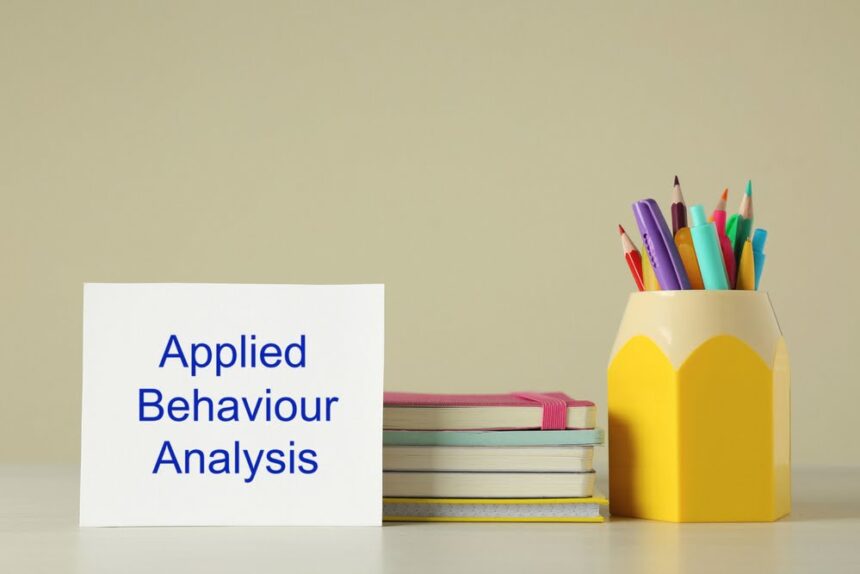We have previously talked about the benefits of therapy and pointed out that it helps save lives. However, we haven’t gone into as much detail about some of the different types of therapies. One cutting edge therapy is known as ABA or (Applied Behavior Analysis).
ABA refers to therapies based on the behavior analysis branch of science. There are many major benefits of using this revolutionary form of therapy. It is actually the most common form of therapy for children with autism. However, that is not the extent of the benefits of ABA.
ABA is much more than a treatment for autistic children. It can be utilized for everything from eating disorders treatment to traffic control. Behavior analysts look at the causes and effects of human behavior. They then create interventions depending on the information they’ve gathered.
One of the advantages of ABA therapy for autism is that treatment can target any behavior relevant to that child. Behavior Analysts have been able to develop and enhance their method without being sidetracked by the numerous diverse theories of autism’s etiology. Modern ABA programs differ significantly from those of 20 years ago. ABA is now far more adaptable, functional, and enjoyable for the child.
Dr. Ivar Lovaas, a behavioral psychologist, was the first to use ABA on children with autism. His theory was that autism is a collection of behavioral symptoms that may be altered or eliminated. He felt that children with autism could be taught social and behavioral skills. Therapists have researched and adapted Lovaas’ technique, sometimes known as “discreet trial training,” throughout time. Today’s therapists focus on assisting patients in learning to live fully and independently. Plans target not only behavior but also social and emotional abilities.
There is no such thing as a one-size-fits-all ABA program for autism. ABA should not be thought of as a set of prepared drills. Instead, each program is tailored to the specific needs of the learner. Any ABA program’s purpose is to assist each person in developing skills that will help them become more independent and thrive in the short and long run.
The program is designed and overseen by a skilled and trained behavior analyst (BCBA). They tailor the ABA program to each student’s skills, requirements, interests, preferences, and family situation. The BCBA will begin by thoroughly evaluating each person’s abilities and preferences. Then, they’ll use it to set down precise therapy objectives. The goals and priorities of the family may also be included.
Outside of therapy, ABA relies on parents and caregivers to help reinforce desired behaviors. Your child’s therapist will educate you and their teacher’s ways of supporting their treatment work. You’ll also learn how to safely avoid less successful reinforcement methods, such as giving in to tantrums.
Therapy can also be done in the comfort of your own home. Some children benefit from ABA at home because they are more at ease in familiar settings. It may also make essential life tasks, such as getting dressed and using the restroom, more manageable for children to grasp. However, at least initially, it’s ideal to do ABA at home with the support of a certified therapist. They can assist you in developing a program specific to your child’s needs.
In recent years, ABA has been the subject of heated disputes. Many autistic people and their allies are outspoken in their opposition to this approach. It used to take up to 40 hours of therapy every week in past decades. Much of this time was spent sitting at a desk or table, completing duties. Unwanted actions were frequently addressed through punishment. And there was a lot of emphasis on making kids “normal.” A person with typical developmental, cognitive, or intellectual ability is referred to as “neurotypical.”
People increasingly appreciate the importance of neurodiversity, which refers to the various ways in which the human brain can function. As a result, ASD treatment is shifting away from attempting to “cure” persons with the disorder. Instead, treatment focuses on modifying problematic habits, helping children gain the skills and strengths they need to live a happy, independent life.
Like many other therapies for autism, ABA is well worth a try. Before you begin, double-check that your child’s therapist is qualified and understands how and where they will work with your child. Establish quantifiable goals with your therapist. Keep an eye on the process and the results. Above all, pay attention to your child’s reactions to the therapist and the therapy. Is your youngster enthusiastic about seeing the therapist? Does your youngster greet the therapist with a smile and active participation? Is your youngster developing skills that will benefit them in everyday life? You would be on the right track if you answered yes to all questions. If not, it’s time to rethink your strategy.

